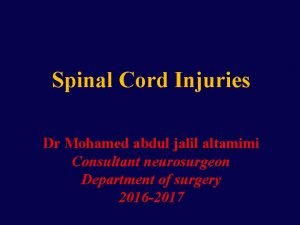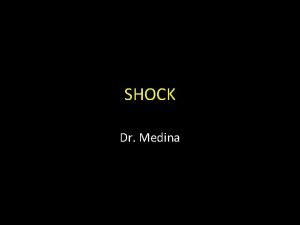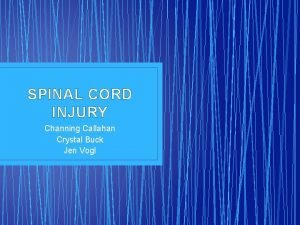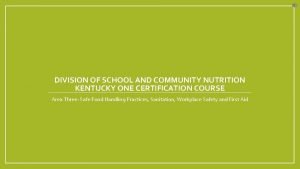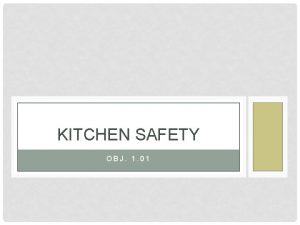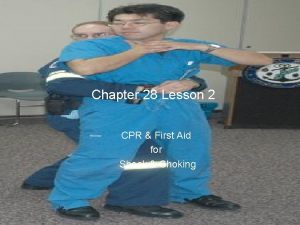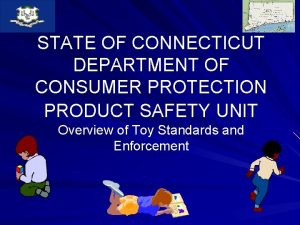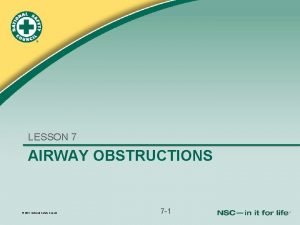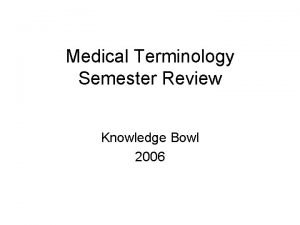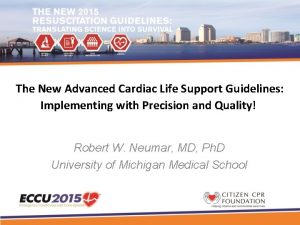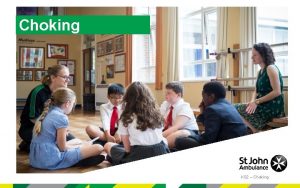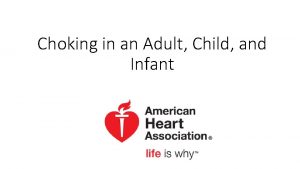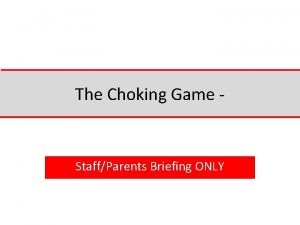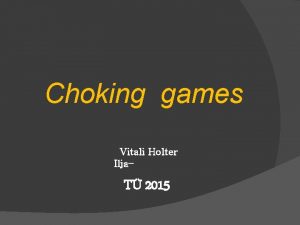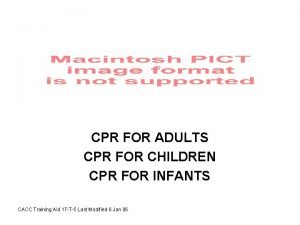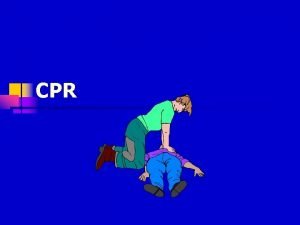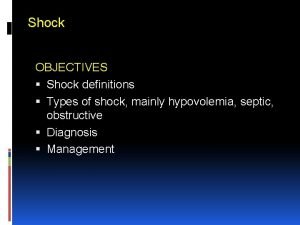CH 28 LESSON 2 CPR SHOCK AND CHOKING













- Slides: 13

CH. 28 LESSON 2 CPR, SHOCK AND CHOKING PG: 742 -748 NOTEBOOK: WOULD YOU FEEL CONFIDENT GIVING SOMEONE AID, IF THEY WERE CHOKING, WHY OR WHY NOT?

LESSON OBJECTIVES In this lesson, you’ll learn to: Identify the appropriate steps for responding to life-threatening emergencies. Analyze strategies for responding to an emergency situation requiring CPR. Analyze strategies for responding to a shock or choking victim.

CHAIN OF SURVIVAL (VOCAB) A sequence of actions that maximize the victim’s chances of survival.

CHAIN OF SURVIVAL EXAMPLES • Calling 911 • Beginning CPR • Defibrillation • (AED): “Automated External Defibrillator” a device that delivers an electric shock to the heart to restore its normal rhythm. • Advanced Care

“CPR” CARDIOPULMONARY RESUSCITATION (VOCAB) • First-aid procedure that combines rescue breathing and chest compressions to supply oxygen to the body until normal body functions can resume. • You must be properly trained by a professional and certified before administering CPR.

PERFORMING CPR http: //www. youtube. com/watch? v=0 mdy_Bhug 2 c CPR for Adults • If an adult victim is unresponsive, tap him or her and ask in a loud voice, “Are you okay? ” • If the victim doesn’t respond, start the chain of survival. • First, call 911 or have someone else do so. CPR for Infants and Children Infants and children in lifethreatening emergencies aren’t treated in exactly the same way that adults are. You shouldn’t use an AED on an infant or a child. Provide about one minute of CPR before calling 911 for help.

THE ABCS OF CPR Circulation Breathing Airway If the victim is not breathing normally, begin rescue breathing Remove anything you see blocking the airway. If there are no signs of circulation, begin chest compressions immediately.

SHOCK (VOCAB) • • A life threatening condition in which the heart is not delivering an adequate supply of blood to the body. Common symptoms of shock include: restlessness or irritability; altered consciousness; nausea; pale or ashen appearance; cool, moist skin; and rapid breathing and pulse. http: //www. youtube. com/watch? v=979 Nvgo Ue. Vk&safe=active

WAYS TO HELP A SHOCK VICTIM • Have the victim lie down. • Phone 911 or the local emergency number. • Control any external bleeding. • Elevate the legs about 12 inches. This helps the blood return to the heart. • Never give the victim anything to eat or drink. Eating or drinking could cause vomiting. • Reassure the victim.

FIRST AID FOR CHOKING Recognize the Signs of Choking • Choking occurs when a person’s airway becomes blocked by food or an object. • If the obstruction is not removed, the victim can die from lack of oxygen within a few minutes. • A person may clutch his or her throat with one or both hands, which is the universal sign for choking. • If someone appears to be choking but can cough forcefully or speak, do not attempt first aid. • A strong cough can expel the object from the airway. http: //www. youtube. com/watch? v=t. EIi. EAn 7 b-U&safe=active

WAYS TO HELP A CHOKING INFANT • Hold the baby face down on your forearm. • Support the infant’s head and neck with your hand point the head downward so that it is lower than the chest. • With the heel of your hand, give the infant five blows between the shoulder blades. • If the object is not dislodged, turn the infant over and perform five chest thrusts as described in the CPR section. • Call 911 if the object is not dislodged within one minute.

REVIEW Q. ______ is a life-saving first-aid procedure that combines rescue breaths with chest compressions. A. B. C. D. Chain of Survival Cardiopulmonary Resuscitation Shock Defibrillator

REVIEW Q. What is the universal sign for choking?
 Hangman fracture
Hangman fracture Shok neurogenico
Shok neurogenico Spinal shock vs neurogenic shock
Spinal shock vs neurogenic shock Spinal shock vs neurogenic shock
Spinal shock vs neurogenic shock Spinal shock vs neurogenic shock
Spinal shock vs neurogenic shock Choking prevention
Choking prevention 7 types of kitchen accidents
7 types of kitchen accidents Universal sign of choking
Universal sign of choking Choking hazard warning wording
Choking hazard warning wording Site:slidetodoc.com
Site:slidetodoc.com Skillsusa health knowledge bowl practice test
Skillsusa health knowledge bowl practice test Edward kim
Edward kim Early cpr and early defibrillation can: *
Early cpr and early defibrillation can: * Extracorporeal cpr
Extracorporeal cpr
